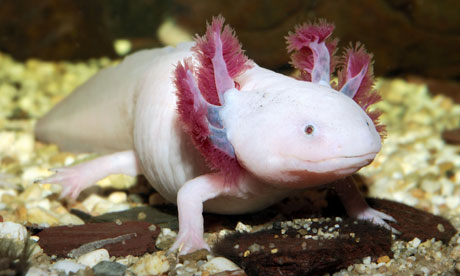
Kismet – don't knock it. I mean the little flurries of coincidences and symbols that seem to herald approaching change. I've been informally watching the dynamics of change for as long as I can remember. It seems to me change comes in clusters, and its triggers seem to fire independently and simultaneously, mostly in areas of life already pregnant with something: anything from a death to an unexpected success or an unforeseen setback.
Take the infuriating fairground game Penny Falls, where you feed coins into a slot and they drop onto a moving ledge of other pennies, forever on the verge of falling. It's like that: energies, purposeful or not, gather and gather and eventually reach a critical mass, at which point a trigger sets them all falling.
I've also found that change-clusters send a signature up-front: a notice of impending change. A couple of pennies fall in advance, and you can see the area of pressure they fell from. This is how change seems to work. My first novel, Vernon God Little, came from watching the signature of a high-school massacre. The matter of affluent teens exploding was about to arrive, the culture was overheated, and these were the first pops – and it did arrive, and arrived to stay. Likewise, I sketched the setting of my most recent book, Lights Out in Wonderland, an allegory of late capitalism, when times were booming; but it was clear, once banks started giving loans to people without incomes, that the pennies were ready to fall.
Hence, strangely, axolotls. Bear with me: I don't feel it's wishful or magical thinking to say we appear to be approaching a change in the very foundation of thought about life and the universe. The pennies are stacking up. The signatures have appeared in the last year. I feel the kismet like the drawing-back of the tide before a tsunami. Towards a sudden time when the internet seems as baroque as wax-sealed parchment. Cancer treatment as dumb as being bled. Our notion of space as arcane as the flat earth.
On science's side, the signatures are that Darwin's theories have developed major holes and quantum mechanics suddenly explains things better. To practical ends, quantum computers are being designed to prove theories far stranger than fiction, involving multiple universes and communication between molecules anywhere across space. Meanwhile, computing rapidly approaches "the Singularity" – that point when computers become more able than us to design and build their own superiors. There's already one credible university founded solely on the study of changes that will accompany the Singularity. As for human life, genome-mapping was like breaking the sound barrier. We now accelerate into the straight, past stem-cell research and, perhaps, less than a decade away from safely regrowing ourselves.
Hence, curiously, axolotls.
One night, after the right drinks with Bridget Nicholls, founder of Pestival, the organisation dedicated to weaving art into bioscience and vice-versa, I was prompted to add a small signature to the kismet I feel around us. Musicians including Andy Mellon (trumpet-player with Bellowhead) and Ben Nicholls (double-bass-player with Seth Lakeman) were inspired to compose music for the axolotl after seeing them at London Zoo. I have added a small reading in the voice of an axolotl parent, admonishing its young after a couple of its neighbours' limbs disappeared. Which is the point about axolotls, and brings them sharply into the modern day: they may have been around for millennia (the Aztecs worshipped them, believing them to be the secret manifestation of Xolotl, the god of lightning and death), but we have suddenly realised they have something we badly, badly want. They can regrow themselves. Science wants to know how.
It's the perfect kismet for me. I grew up near Lake Xochimilco where I discovered magic in the air and underwater. This lake, situated south of Mexico City, is their last habitat on earth – and they're almost extinct there. I used to keep them as pets, used to watch them regrow limbs and tails, used to negotiate a better price from the street vendors who sold them, because they were already missing a part here or there.
The axolotl is a symbol of so much we're about to hit upon – certainly worth setting music to. The axolotl (Ambystoma mexicanum) is a type of salamander that never metamorphoses. Although it grows to sexual maturity, reproduces, and lives a long life, it remains a water-dweller throughout, never leaving an essentially infant state. They are genetically this way – and science is currently studying those genes like mad, unlocking the secrets of regeneration, cancer signalling, cell migration. The holy grail of persistent youth. In just a few weeks, an axolotl can regrow its limbs, tail, jaw – even its spinal column.
And I, who used to watch them leer back from a tank in my bedroom, cool-looking amphibians with jester's hats, have survived to see them become symbols of major oncoming change. It might seem strange – and, well, they are strange, and I am strange, and neither of us matured – but to spend this Saturday at London's Natural History Museum, setting their strangeness and our strangeness and their hope and our hope to music, with tequila and marimbas and trumpets and lights … just seems like a signature we should do. Just because. Kismet.
• DBC Pierre appears in Live and Roar: An Axolotl Odyssey, at the Natural History Museum, London SW7 from 8pm on 23 June.

